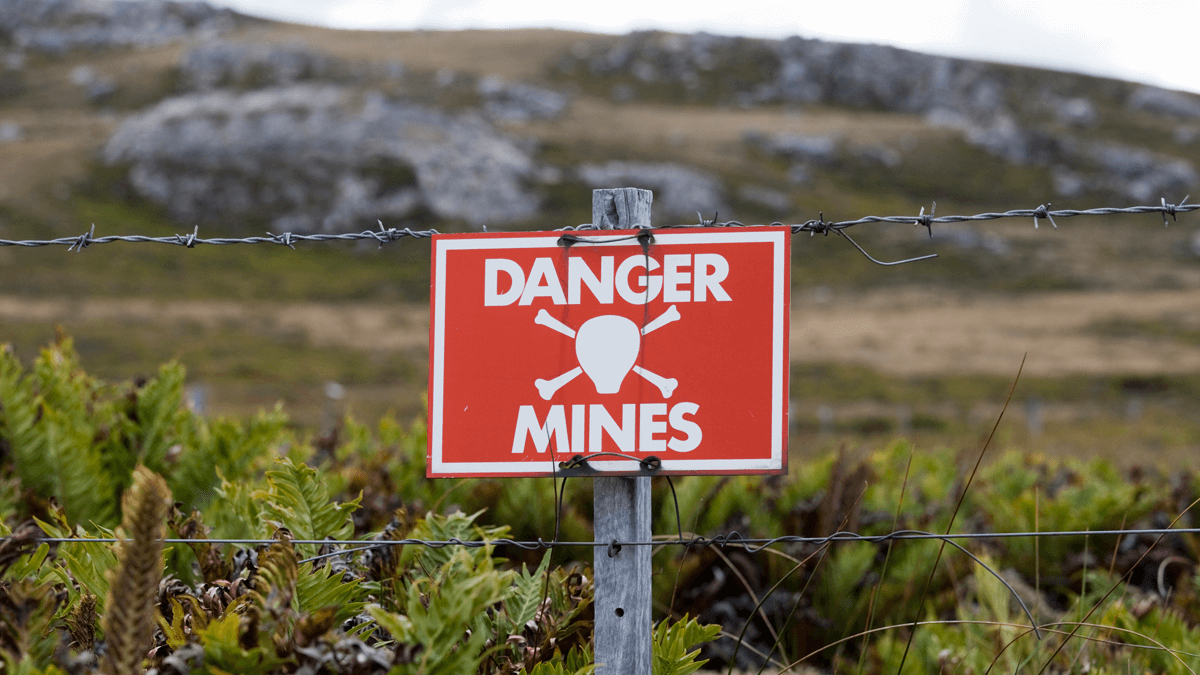One of our best innovations started as an experiment. In 2004 I projected my notes during a customer interview. The customer loved it, the meeting went far longer than expected, and we haven’t looked back since. Sure, customers can correct your notes this way, but our biggest discovery was that customers own what they create and can see. We’ve been calling these “Discovery” interviews ever since.
More in video, Reinventing VOC for B2B
With a high-certainty project, you can accurately predict your financial profits. With an uncertain project, you face significant potential downside and upside profits. In B2B markets, you can understand the downside very early. You’ll kill the project cheaply if the downside cannot be eliminated. And reap big upside profits if it can.
More in white paper, Innovating in Unfamiliar Markets (page 5)
A project landmine is something that blows up budgets, schedule and reputations. No one steps on one they can see. So why don’t we look for them harder and earlier in a project life? Because we’ve been conditioned to think that killing our project equates to failure. Instead, we should identify areas of uncertainty as early as possible. Celebrate when you kill your own project swiftly… and celebrate when you try hard and are unable to kill it.
View video, De-risking Transformational Projects
I’ve seen many new-product teams foiled by organizational turmoil: A travel ban blocks customer meetings… Spending freezes delay critical work… A reorganization creates uncertainty until the “dust settles”… New initiatives overshadow their project… Key team members are given new assignments. Success requires persistent focus.
More in article, The Inputs to Innovation for B2B
No team wants to waste time on a loser: Life is too short. So if management has to stop a project, the team was inexperienced, communicated poorly, or had different expectations than management. All these ailments are addressed by requiring every team to use a common business case template, not their own, start-from-scratch PowerPoint® presentations.
More in article, How Leaders Can Accelerate New-Product Development
If any process in your company should be customer-driven, it should be the one developing products for customers, right? So try this at your next review: Ask team members how many hours they spent talking to customers… and how many hours working internally. You may be surprised at how little time was spent understanding customer needs.
More in article, Should Your Stage-Gate® Get a No-Go?
One of our best innovations started as an experiment. In 2004 I projected my notes during a customer interview. The customer loved it, the meeting went far longer than expected, and we haven’t looked back since. Sure, customers can correct your notes this way, but our biggest discovery was that customers own what they create and can see.
Read more in the article, The Best Customer Interviews Use a Digital Projector (Originally published in B2B Organic Growth newsletter).
With a high-certainty product project, you can accurately predict your financial profits. With an uncertain project, you face significant potential downside and upside profits. In B2B markets, you can understand the downside very early. You’ll kill the project cheaply if the downside cannot be eliminated. And reap big upside profits if it can.
You can methodically strip away uncertainty and de-risk your projects. This is done through a four-step process that combines Discovery-Driven Planning with New Product Blueprinting. Learn more in this white paper, Innovating in Unfamiliar Markets (page 5).








